Table centers – less is more
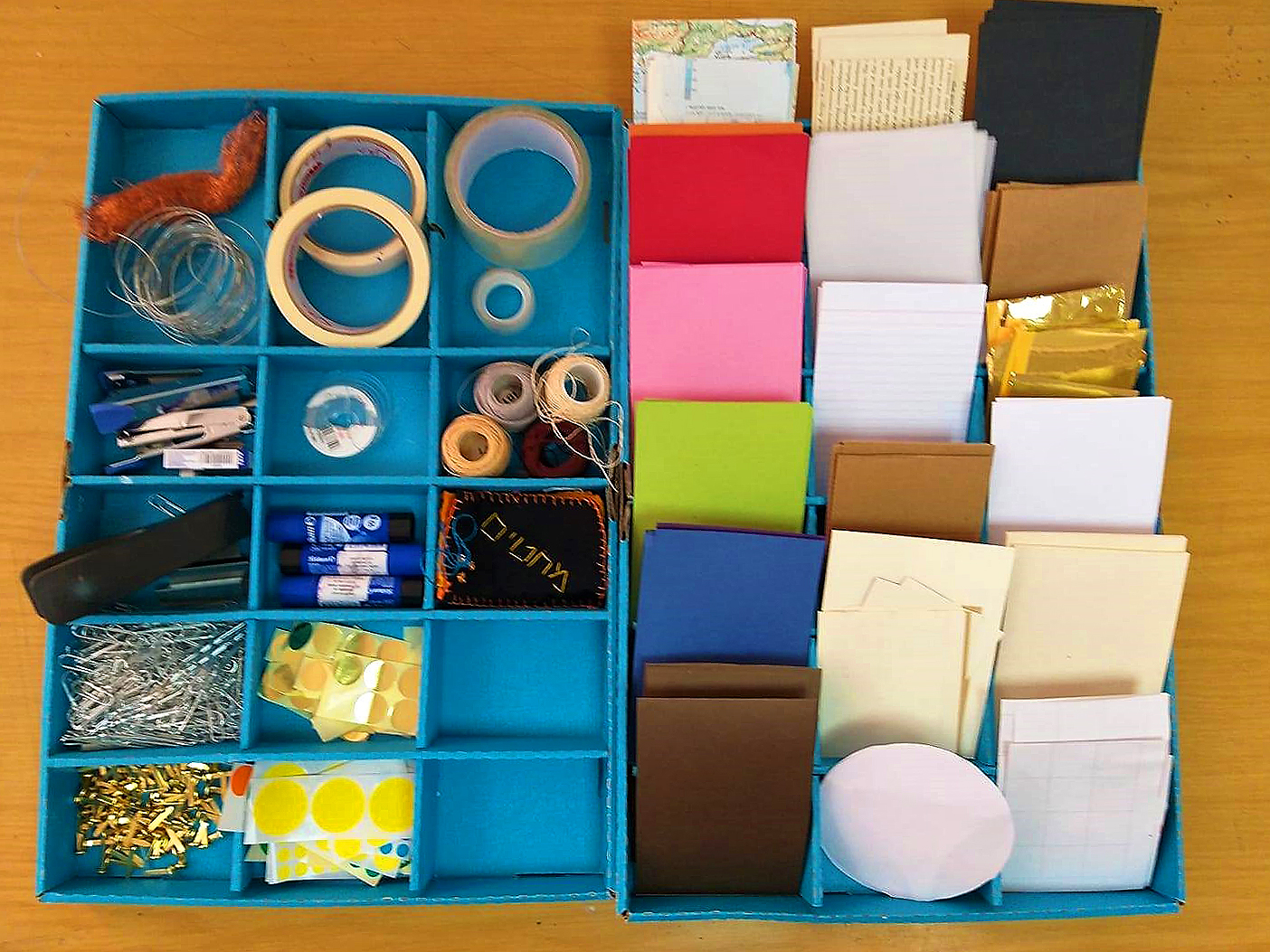
I want to relate to table centers from my faraway perspective, Israel, and how we do it here when you have 35 kids going in and out every 45 minutes.
I manage an 8K Hebrew study group, “Studio Visits,” for educators and art therapists interested in working in an open studio setting. Our classes are half the size of American art rooms, and a teacher here is lucky to have one small sink. We have only basic art materials and collected ones from nature and industry.
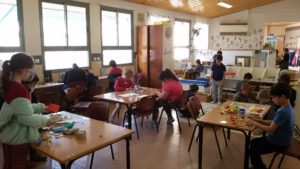
Helit Shacham: Notice that there are places to sit facing the window with more privacy.
We wish our children to become competent, creative, and collaborative. Studio life is a physical – emotional – social-technical tool to teach independence, creativity, belonging, and this goes to the core: democracy!
The studio is a tool to practice democracy!
I will demonstrate how this idea is embodied even in the way you understand and organize table centers.
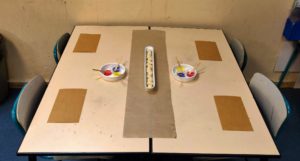
Naama Avihud: The dark gap between tables was covered with brown paper as a tray for the dough.
Each couple shares a dish with paints.
We have noticed that too much stuff on tables, many suggestions, and too much help creates insecurity, dependency, and avoidance when this shrinks to what is accurately needed, creativity and engagement rise!
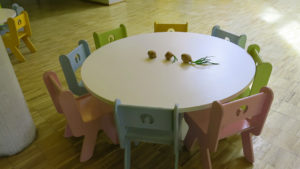 A suggestion for a talk? For thinking together?
A suggestion for a talk? For thinking together?
Table set for Kindergarten children in Reggio Emilia
What is an accurate table center?
A good presentation of a table center is thoughtful, compelling, and inviting physically for specific children at a particular time.
It is a gift to the eyes. It is an offering.
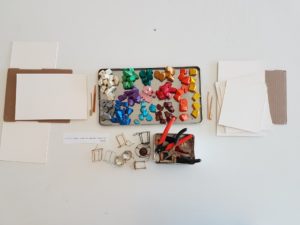
Nona Orbach: Plasticine suggestion for a study group of art therapists
The teacher’s choice is based on her knowledge of the children. She will attune the collage table or the drawing table to what she has already learned about them. For example, Noa Shay wanted to deepen the quality of the black line through different markers and pencils. It might be minimal changes, but they derive from accumulating knowledge of the children.
Such a process becomes a nonverbal undercurrent communication bypassing language!
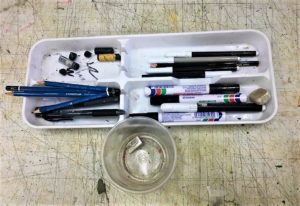
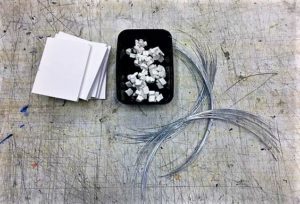
Two suggestions by Noa Shay
The physical suggestion is so compelling for the little ones’ curious mussels that words are not needed. Children sense joy! The body will feel activated so the children can begin working immediately. There is no need for the teacher to talk and give instructions in words.
All the children who chose a table have a mutual interest in that material that morning. They have a common denominator chosen by their body, and they most likely will share and be inspired and perhaps even begin group work.
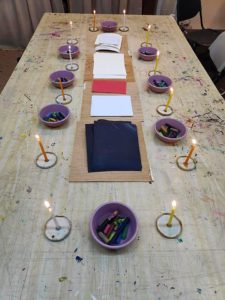
Nataly Yannai – a suggestion fםr Hanuka: melting candles
What about the children who need help?
As much as possible, we encourage them to learn from their friends. This enhances the social relationship, kindness, sharing, and ability to ask for help and give support.
Your assistance is connected to all you know of the child. It is finding ways to empower her unique path she made and ask questions more than giving an idea. The more she will invent how to get out of that obstacle, the better it is.
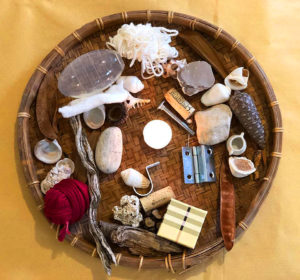
Gali Atiya: A tray with objects to choose from, in an art therapy workshop
What do you do?
You should observe and write down each child’s phenomenological aspects so you can learn their blueprint within a few weeks. Understating that you will most likely be able to relate accurately and individually to each one of them!
When a child feels that he is really seen for who HE IS – it builds trust and more courage to go even deeper into their work.
Working in this manner, all problems of avoidance are shrinking fast.
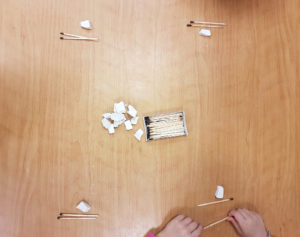
Nona Orbach: Demonstration for the kindergarten educators; less is more: Each child got two matches and a plasticine cube: what can be done with it? They worked daily for over a week.
What more do you do?
You might comment on the variety of approaches around each table. You will talk about what you see phenomenologically and name the verbs they were using. You will also talk about the diversity and richness and that every expression has a place in the studio. There is less need to compete, to be perfect. Living together within such variety and acknowledging that there are more ways than just mine is an aspect of democracy.
The studio becomes a safe place.
Moreover, they will soon imitate you and use such terminology instead of saying, “This is beautiful,” which is not enough. It is shallow. They will also use this language naturally as they observe art in the museum or on slides.
Ten minutes before they leave, they need to set the table as they found it. [competence, independence, social responsibility]
You suggest that they will have five more minutes to work if they can do it in less time.
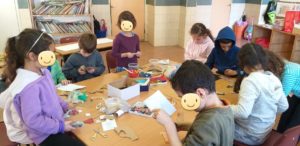
Upper image by Helit Shacham, a suggestion for election day using an election real trays, cards, and connectors
The containers are crucial for this non-verbal process. You can read more about it here:
My book is on Amazon:
Thanks, the suggestion of simplicity is extremely helpful
Thank you Kristin!